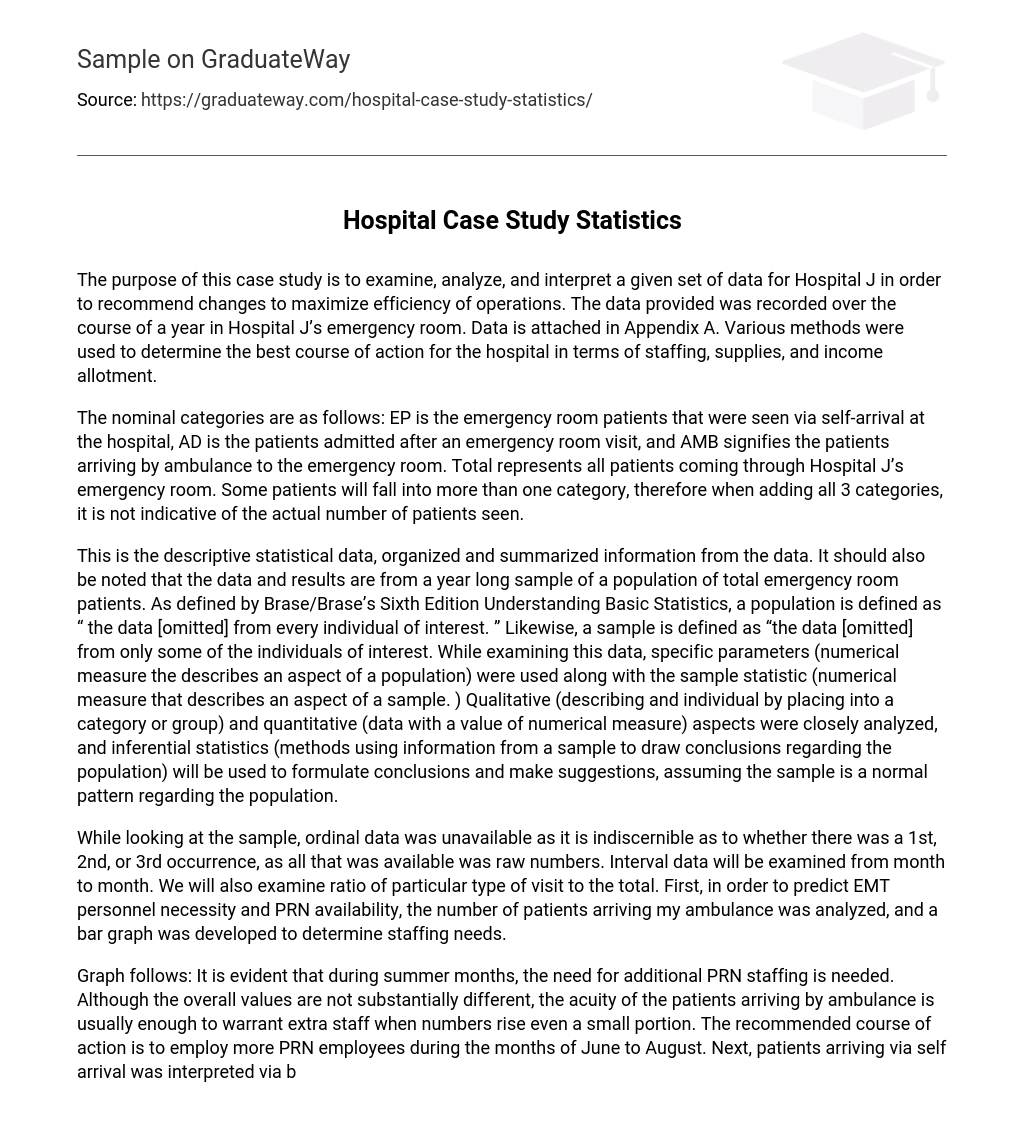The purpose of this case study is to examine, analyze, and interpret a given set of data for Hospital J in order to recommend changes to maximize efficiency of operations. The data provided was recorded over the course of a year in Hospital J’s emergency room. Data is attached in Appendix A. Various methods were used to determine the best course of action for the hospital in terms of staffing, supplies, and income allotment.
The nominal categories are as follows: EP is the emergency room patients that were seen via self-arrival at the hospital, AD is the patients admitted after an emergency room visit, and AMB signifies the patients arriving by ambulance to the emergency room. Total represents all patients coming through Hospital J’s emergency room. Some patients will fall into more than one category, therefore when adding all 3 categories, it is not indicative of the actual number of patients seen.
This is the descriptive statistical data, organized and summarized information from the data. It should also be noted that the data and results are from a year long sample of a population of total emergency room patients. As defined by Brase/Brase’s Sixth Edition Understanding Basic Statistics, a population is defined as “ the data [omitted] from every individual of interest. ” Likewise, a sample is defined as “the data [omitted] from only some of the individuals of interest. While examining this data, specific parameters (numerical measure the describes an aspect of a population) were used along with the sample statistic (numerical measure that describes an aspect of a sample. ) Qualitative (describing and individual by placing into a category or group) and quantitative (data with a value of numerical measure) aspects were closely analyzed, and inferential statistics (methods using information from a sample to draw conclusions regarding the population) will be used to formulate conclusions and make suggestions, assuming the sample is a normal pattern regarding the population.
While looking at the sample, ordinal data was unavailable as it is indiscernible as to whether there was a 1st, 2nd, or 3rd occurrence, as all that was available was raw numbers. Interval data will be examined from month to month. We will also examine ratio of particular type of visit to the total. First, in order to predict EMT personnel necessity and PRN availability, the number of patients arriving my ambulance was analyzed, and a bar graph was developed to determine staffing needs.
Graph follows: It is evident that during summer months, the need for additional PRN staffing is needed. Although the overall values are not substantially different, the acuity of the patients arriving by ambulance is usually enough to warrant extra staff when numbers rise even a small portion. The recommended course of action is to employ more PRN employees during the months of June to August. Next, patients arriving via self arrival was interpreted via bar graph (follows. )
This is scattered and more examination is needed to recommend an appropriate course of action. Finally, patients admitted after ER visit was placed into bar graph format. There is not an evident pattern in this situation to warrant more investigation, as admission is highest in January and July, but never more than 100 patients in difference per month. After analyzing the categories of emergent patients, the total for the year was evaluated and placed into a circle graph in order to evaluate the busiest months of the year. This graph follows.





